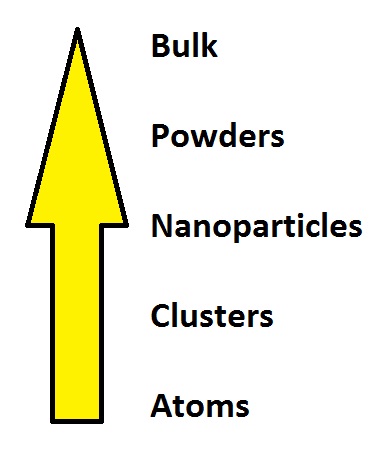
I spent the end of last week switching back and forth between my regular job duties as a librarian and our Conference for Undergraduate Women in the Physical Sciences. This is one of my favorite conferences because students always do the most investing research, and it’s nice to attend a conference where I’m just there to learn and build relationships. In many ways I wear a bit more of my scientist hat at this conference than my library one, although, as always they overlap quite a bit.
Although all have been welcome in the past, previous years have focused on Physics not the Physical Sciences in general. Last year theme focused on graphene, but this year the focus of the conference was on nanomaterials. This was especially appropriate with the opening of the new nanoscience center on campus.
Another difference this year was the higher attendance and presentation (at least from my point of view as an attendee) of undergraduate and graduate men in the physical sciences. Attendees came from all over including Ohio, Kansas, Pennsylvania, Peurto Rico, and Virginia to name a few.
Students presented posters on a variety of topics from the atmospheric science, to breast cancer research, lasers, optics, seismology, to how mice communicate and more. My favorite part of the conference is talking with students about their research and career goals, letting them know about opportunities available to them, and encouraging them to forge their own unique career path that will enrich their lives and society. I think presenting students with options and opportunities is especially important because it empowers them to make thoughtful choices instead of pushing them into linear career paths with “no chance of deviation if you want to succeed”.
Sadly I wasn’t able to attend as many sessions as I would have liked but here are a few highlights from a talk titled Not Just for Jewels Only: The Incredible Story of Gold Nanoparticles given by Talat S. Rahman, Department of Physics, University of Central Florida.
*These notes are primarily paraphrases of her talk, any errors or misunderstanding should be attributed to me and not the speaker.
In regards to women in science:

Over time you can drive the change, sometimes you might be the only woman or one of two or three, keep participating and encouraging other women and you will see it shift over time.
Nanoscience and gold:
Nanoscience is about starting to look at building blocks, you study the interesting properties of these building blocks in order to lead to new technologies. Quantum effects are often revealed at the nano-scale, and melting points vary rapidly as a function of size of nanoparticles. Properties at this scale a expected to control characteristics at a larger scale.
Using the bottom up approach is important. We should start with atoms followed by: clusters, nano particles, powder, and bulk materials.
Gold clusters are very attractive for drug delivery because they are:
Tunable functionality with different enzymes
Water soluble
Bio compatible
Resistant to oxidation
Extremely stable under physiological conditions i.e. high salt concentrations etc.
Potential treatment of cancer
Indicator for the presence of specific bio molecules
How you prepare the samples will determine whether you get a metallic or nonmetallic particle. The spacing between gold atoms determines the plasmon mode (plasmons are electron density waves), and whether the sample acts as a metal or semiconductor in the case of gold.
Does nanoscience live up to the hype?
Reflects hope particularly in developing countries
New paradigm, novel approach
Demands diversity in thinking
Opportunities for broader participation
Novel avenues for developing human resources
Bottom up vs top down approaches
Engages creativity
It’s hard to distill the essence of someone’s talk in a few hastily typed notes but if you ever have the chance to hear Dr. Rahman speak I highly encourage you to do so.
*This conference was sponsored by the Materials Research Science and Engineering Center (MRESC Nebraska), the Center for Nanohybrid Functional Materials (CNFM), Nebraska Center for Materials and Nanoscience, Nebraska EPSCoR, University of Nebraska-Lincoln Department of Physics and Astronomy, and the University of Nebraska-Lincoln Office of Research and Economic Development.
